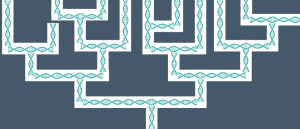
BioTechniques News
Beatrice Bowlby

The structure of a key enzyme involved in protein production is revealed by cryo-electron microscopy (cryo-EM).
Using cryo-EM, researchers at Goethe University (Frankfurt, Germany) shed light on eukaryotic pre-transfer RNA (pre-tRNA) splicing, a key stage in protein production, and rationalize mutations associated with the neurodegenerative disorder pontocerebellar hypoplasia.
Transfer RNAs (tRNAs) are found in all living organisms; they are essential to protein production as they determine how a nucleic acid sequence is transcribed into amino acids, which direct protein building. Pre-tRNA is converted into mature tRNA, which has a complex 3D structure, through a series of steps, including the excision of an intron by specific endonucleases. In humans, this is catalyzed by the enzyme tRNA splicing endonuclease (TSEN). Although essential to protein production, it was mostly unknown how TSEN binds to pre-tRNA and correctly identifies which intron to remove.
 How does horizontal gene transfer occur?
How does horizontal gene transfer occur?
A new study has shown that virus-like transposons, called Mavericks, are responsible for horizontal gene transfer (HGT) in nematodes.
The researchers of this study utilized a cryo-EM reconstruction to show how TSEN interacts with pre-tRNA, which has an L-shaped structure, to excise an intron from the long portion of the L. “First, TSEN settles in the corner of the L. It can then recognize both the short and the long arm as well as the angle between them,” described Simon Trowitzsch, senior author of the study.
A subunit in TSEN, TSEN54, acts as a ‘molecular ruler’ and measures the distance between the long and short arms of the pre-tRNA structure. This is how the enzyme recognizes where to make the cut and cleave the correct intron.
tRNAs have been found to form incorrectly if TSEN is unable to interact with and bind to the enzyme RNA kinase CLP1 due to a genetic mutation. This can result in neurodegenerative disorders, including a rare progressive disorder called pontocerebellar hypoplasia, which leads to abnormal development of the cerebellum and the pons (part of the brain stem). It causes severe disabilities and premature death in early childhood, and currently, there is no known cure. Studying the changes triggered by pathogenic mutations has been challenging due to a lack of knowledge regarding TSEN’s 3D structure.
The study found that CLP1 binds to an unstructured and flexible region of TSEN54. This region contains an amino acid that is often mutated in those with pontocerebellar hypoplasia. Samoil Sekulovski, the first author of the study, commented, “for us, this is an important indication that drug development in the future should concentrate on maintaining the interaction of TSEN and CLP1.”
The researchers hope this structural data on the TSEN–pre-tRNA complex and the importance of CLP1 will aid the search for active substances for pontocerebellar hypoplasia. Trowitzsch concluded, “although a promising therapy is still a long way ahead of us, our structure indeed forms a solid foundation for a better understanding of how TSEN works and what the disease patterns of its mutants are.”
The post Structure of enzyme involved in pre-tRNA splicing revealed appeared first on BioTechniques.
Full BioTechniques Article here
Powered by WPeMatico
